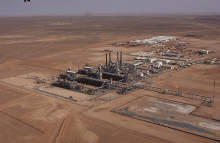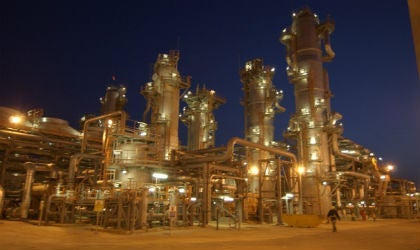

In Salah Southern Fields (ISSF) development project is part of the In Salah Gas (ISG) project, which includes the development of seven gas fields located in the Saharan desert in Algeria. Starting in November 2001, the ISG project is the third largest gas development in the country.
History of the ISG project
The ISG project is operated by In Salah Gas, a joint venture between Sonatrach (35%), BP (33.15%) and Statoil (31.85%). Three gas fields, namely Krechba, Teg and Reg, were developed during the first phase of the ISG project. Phase one achieved first production in July 2004 and is currently producing at the rate of nine billion cubic metres per annum.
The ISSF project forms the second phase of the ISG project which involves the development of the remaining four gas fields including Garet el Befinat, Hassi Moumene, In Salah and Gour Mohmoud. The project will help in maintaining production at plateau levels when production from the three existing fields declines.
The ISSF project commenced in February 2011 and was scheduled to be completed by 2014.
However, in January 2013, terrorists attacked the In Amenas plant operated by the In Salah Gas joint venture. The attack led to the death of 40 people. Development works on the ISSF project were delayed following the attack.
The start-up of the remaining four fields began in February 2016. The project is expected to produce 14.1 million cubic metres a day, once the wells in the Hassi Moumene and Garet el Befinat fields are fully commissioned.
In Salah Southern Fields development project details
The In Salah licence area covers 25,000km². The estimated gas reserves of the project are 340 billion cubic metres (bcm), of which 230bcm are recoverable.
The ISSF project covers an area of 2,000km². It includes the construction of more than 300km of pipelines with diameters ranging from 16in to 30in. The pipeline is made of stainless-steel and carbon steel.
Construction of a new central processing facility (CPF) including two dehydration trains is also part of the project. The CPF will have the capacity to produce 17 million cubic metres of gas a day. A gathering system, well-pads, interfield transfer and expedition line, flowlines and manifolds are also part of the project.
The main challenge encountered by the project was the routing of the pipelines. A terrain evaluation survey and an aerial light detection and ranging (LiDAR) survey were conducted to review the route of the pipelines. Esri ArcGIS software was also used to develop a geographical information system model for the pipeline routes.
Development of the southern fields poses many challenges considering their remote location and proximity to the Ahaggar National Park, an environmental sensitivity area. The region is also one of the warmest in the world with temperatures reaching 63°C.
The temperature, sandstorms and hot winds pose a challenge for construction works.
Processing and transport of In Salah gas
Related project
Algeria Sardinia Italy Gas Pipeline (Galsi), Algeria
A consortium of Sonatrach, Edison, Enel and Hera Group is developing a gas pipeline, which will run from Algeria to Italy via Sardinia.
The 300km pipelines collect gas from the in-field wells and transport it to the new CPF. Initial processing is carried out at the CPF which is tied back to the existing facilities at the Reg field.
The dry gas produced contains between 2% and 9% of carbon dioxide. It is sent to the existing Krechba facility for reducing the carbon dioxide content to 0.3%. Compressors at Krechba then pump the gas into the 48in-diameter Hassi R’Mel line for local and international export.
Contractors involved with the Algerian gas project
In October 2008, Foster Wheeler was awarded the front-end engineering design (FEED) contract for the project. The FEED study commenced in September 2009 and was completed in July 2010.
Petrofac was awarded a $1.2bn engineering, procurement and construction contract for the project in April 2011. The scope of the contract includes construction of a new processing plant, well pads and permanent camps, and installation of 300km of pipelines, flowlines and manifolds.
Bonatti was contracted to manufacture and supply pipelines for the project. The company will supply 161km of pipelines made of 13% chrome materials with diameters ranging between 8in and 16in. It also supplied 65km and 16km of carbon steel pipelines with diameters of 32in and 8in respectively.
Other contractors include Grand Travaux Petroliers and Entreprise de Genie Civil.




